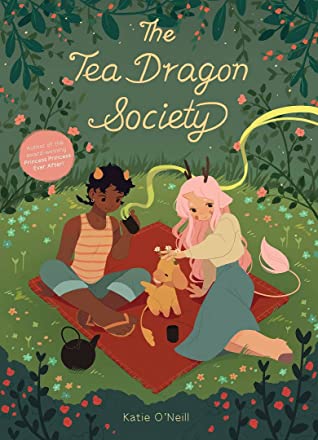
This is probably the cutest, most zero-stakes cozy read I’ve ever encountered. It’s one of my favorite books of all time, and I’d recommend it to almost anyone without hesitation. Had a bad day? Read Tea Dragon. Anxious about life? Read Tea Dragon. Too adrenalized to focus? READ TEA DRAGON. (Also it’s a series!! Even more to love!)
Summary [courtesy of Goodreads]: From the award-winning author of Princess Princess Ever After comes The Tea Dragon Society, a charming all-ages book that follows the story of Greta, a blacksmith apprentice, and the people she meets as she becomes entwined in the enchanting world of tea dragons. After discovering a lost tea dragon in the marketplace, Greta learns about the dying art form of tea dragon care-taking from the kind tea shop owners, Hesekiel and Erik. As she befriends them and their shy ward, Minette, Greta sees how the craft enriches their lives—and eventually her own.
Kay O’Neill’s style is absolutely gorgeous–like the platonic ideal of cottagecore–and I want to live in their illustrations forever.
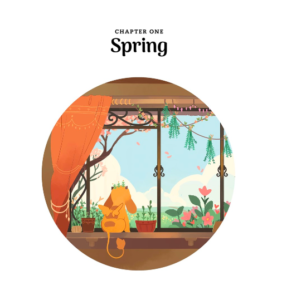
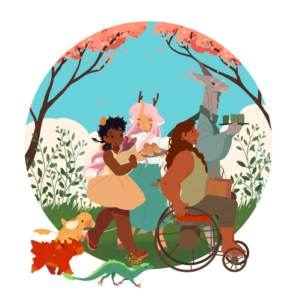
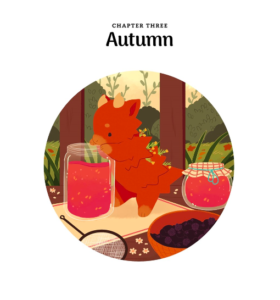
It doesn’t hurt that the tea dragons themselves are the cutest, most kitten-like creatures ever.
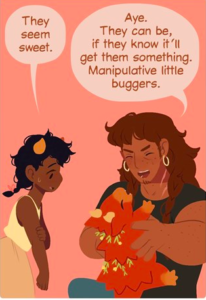
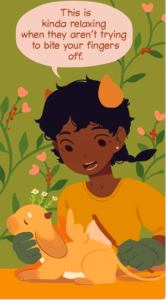
(Did I back the recent Kickstarter for the entire series plus plushies, despite being on a buying ban?? Yes, yes I did. How could I not?)
So, yes, this book is fabulous, and even more important than the beautiful art and cute creatures, it’s got some really solid representation in terms of disabled folks, non-white characters (though some are animal-esque, so it’s sometimes hard to categorize ‘races’ here), and queer relationships. The protagonist is Greta, a young apprentice blacksmith learning her mother’s trade, who also stumbles onto the world of tea dragons and helps preserve the fading tradition.
Greta also has a silent familiar/companion, the sentient ember/coal Brick [shown below], who helps hone her skill at blacksmithing, a skill she fully embraces by the end of the book.
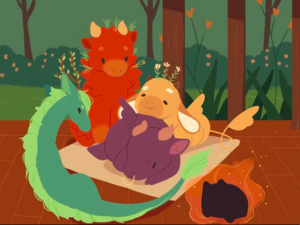
In a way, this is a book about the importance of preserving traditional skills, creations, and generational knowledge, even if they’re not inherited within a biological family. It’s a great lesson for a middle grade/all ages graphic novel, as the traditions highlighted are all about care, time, and consideration, rather than more toxic, Westernized (patriarchal, heteronormative, white supremacist, ableist) ideas of ‘tradition.’
It’s a story that foregrounds caring relationships, from Greta’s newfound friendship with anxious Minette, who has a memory problem, to the queer life partnership of Hesekiel and Erik, aging tea dragon companions and the proprietors of the local tea shop. 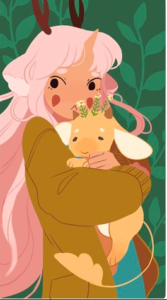
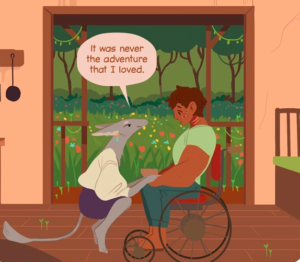
Hesekiel and Erik’s backstory, as swashbuckling adventurers who fell in love as they fought monsters and cared for their tea dragons Jasmine and Rooibos, get organically inserted into the current timeline via the central conceit of the tea dragons: they grow leaves on their backs, which, when harvested and dried, brew a tea that will show the drinker memories made by the tea dragon with its companion. It’s very sweet. It also provides one of the only real moments of peril/conflict in the novel, because these flashbacks show how Erik became a wheelchair user after an encounter with a three-headed beast. It’s a brief, very non-graphic, scene, and the aftermath shows Erik briefly mourning his lost mobility and presumed lost relationship (since he assumes his partner will leave for more swashbuckling). However, we get to see not only Hesekiel’s insistent support of his partner but also their agreement that running the tea shop and deepening their relationship are adventures in and of themselves. It’s a very nice message, and I appreciated that it didn’t gloss over loss or pain but showed how outside support and time can change those feelings.
This is very much a story about memory and long-lasting bonds, both between people (though again, not all are human) and between companions and tea dragons, who can live thousands of years. The idea of grief and mourning comes up toward the end, when Greta adopts her very own tea dragon, Ginseng, after Ginseng’s companion passes away off-page. We learn that tea dragons mourn for a while but eventually adapt to their new companions, which is I think a great way to contextualize loss and death for younger (and adult) readers.
The novel ends with a set of brief appendices of sorts, including lots of information about tea dragons and the overall world O’Neill has built. (This section includes one of my favorite tidbits from the book: “The dragons retain the haughtiness and pride of their much larger ancestors; however, they lack any survival capabilities whatsoever.”)
It ends with specs about each type of tea dragon, so you too can play my favorite game: figuring out which dragon your cats most resemble. It’s very fun 🙂 (Skittles is totally a Jasmine, in case you were wondering.)
